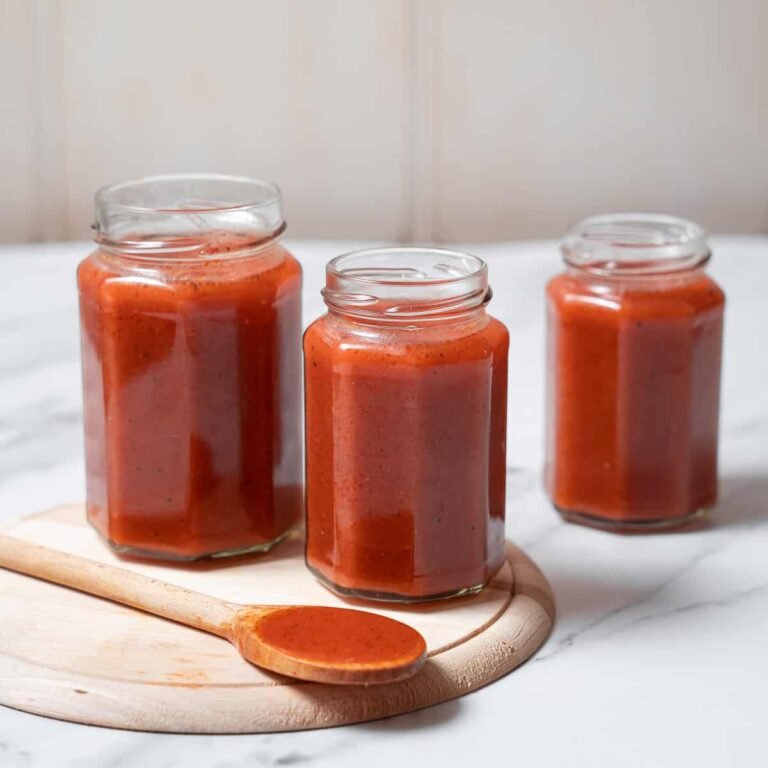
[ad_1]
One of the first sauces I’ve learned in culinary school in Spain is salsa de tomate: a classic Spanish tomato sauce recipe. What makes Spanish tomato sauce different than other versions is the use of onions and carrots–and also a sneaky sprinkle of flour.
Want to try some other Spanish sauces? Don’t miss these recipes for romesco sauce and bravas sauce.
Jump to:
Introduction
When I first heard of the unconventional ingredients in Spain’s salsa de tomate, I was initially skeptical. I was raised in an Italian-American family with a tradition of garden-fresh tomato sauce that never included carrots or flour!
However, my culinary school instructor clarified the purpose of these unusual ingredients. The carrots add sweetness, balancing the acidity of the tomates, and a touch of flour thickens it without altering the flavor.
While it’s different from my family’s recipe, this Spanish tomato sauce has become a favorite for its versatility, perfect for dishes like pollo con tomate.
Ingredients
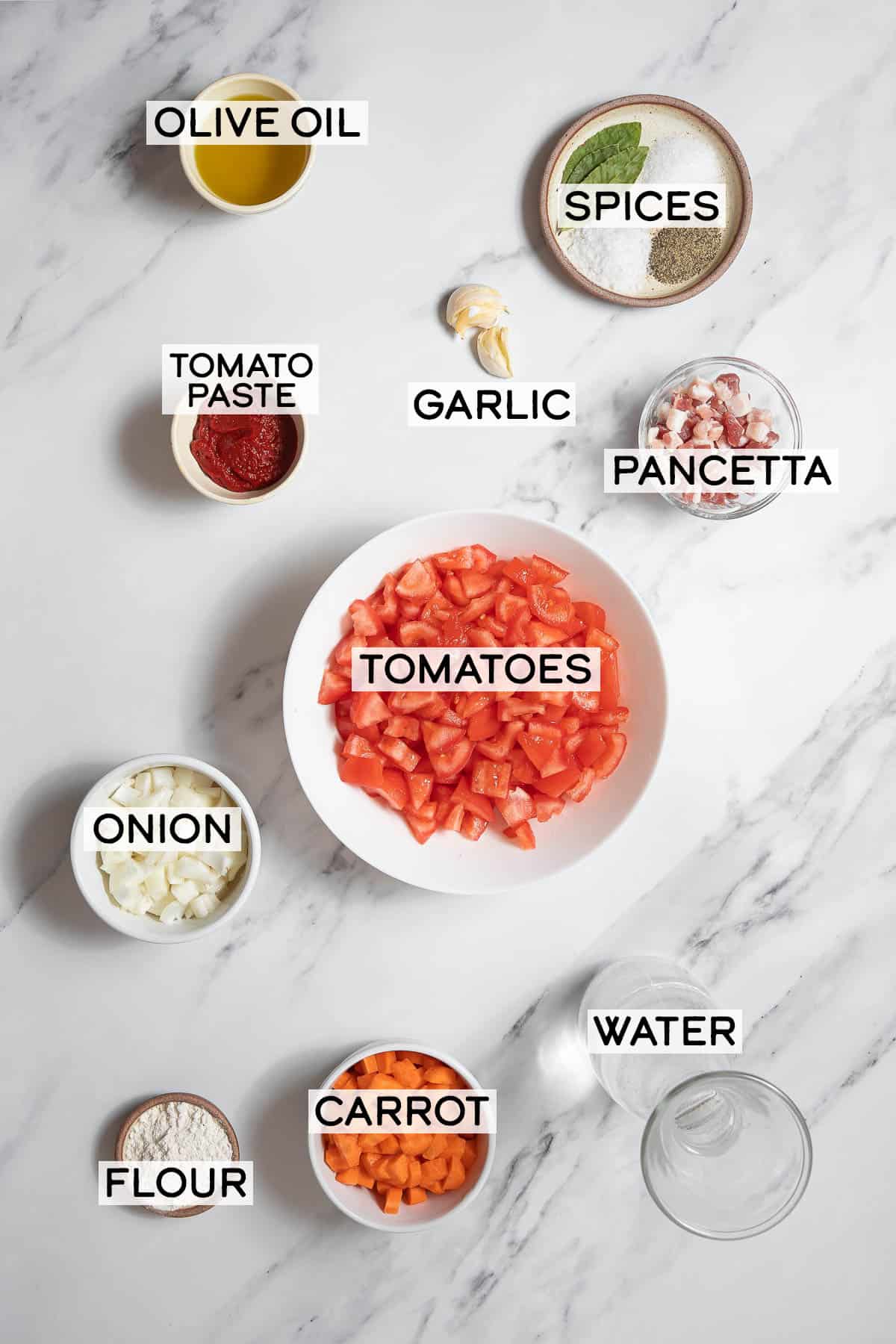
Wondering what ingredients you need for Spanish salsa de tomate? You’ll need some different ingredients than in a traditional Italian sauce. Let’s talk about them.
- Pancetta: This salty, fatty type of bacon brings a wonderful depth of flavor to the sauce!
- Carrot: This vegetable brings extra sweetness to the sauce, counteracting the natural acidity of the tomatoes.
- Flour: This is cooked briefly to remove its “floury” taste, and it will thicken the sauce and give it a wonderful texture.
See recipe card for full information on ingredients and quantities.
How to Make Salsa de Tomate
If you’d like to see the full ingredients and instructions, scroll to the bottom of the post for the printable recipe card.
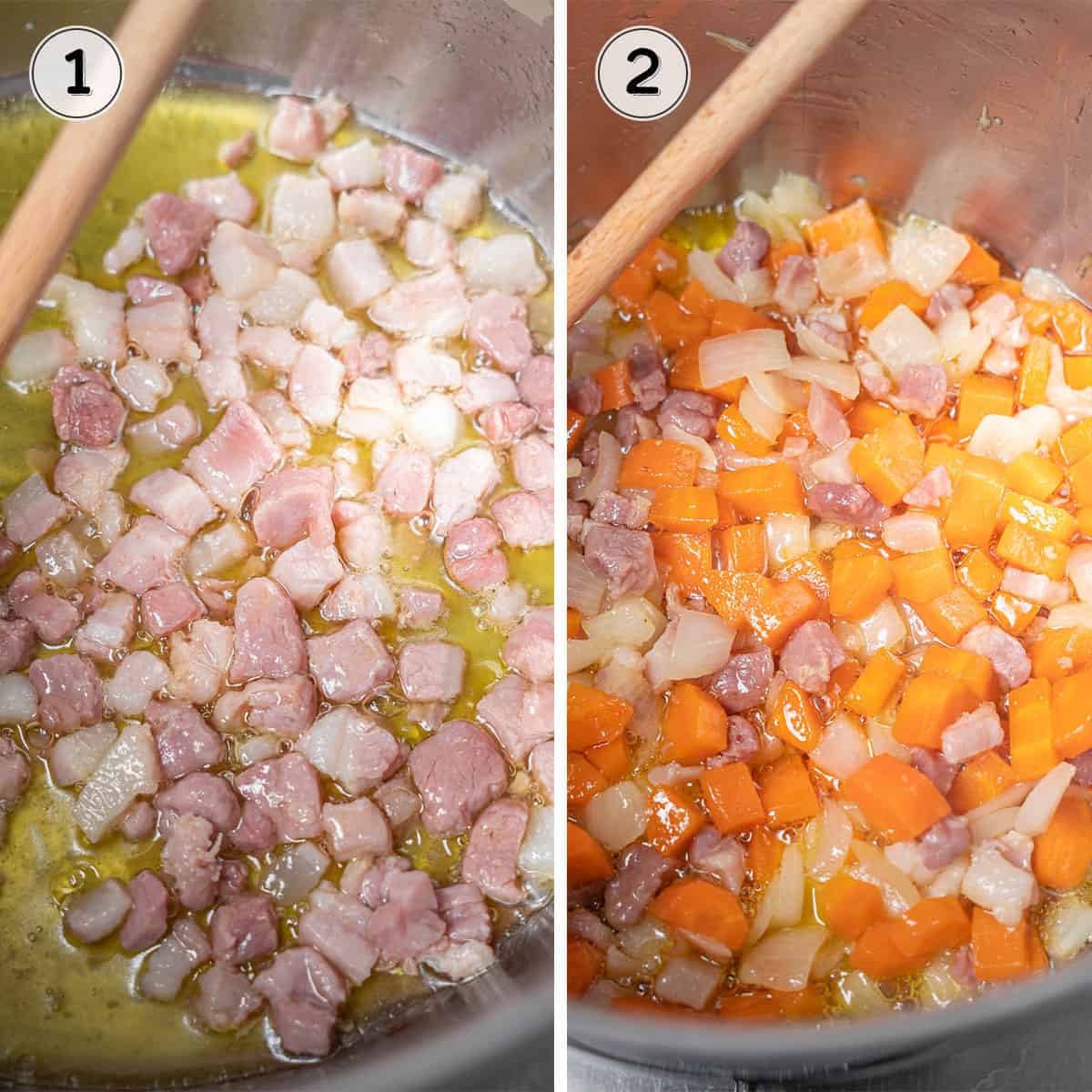
- Heat the olive oil in a pot, then add the diced pancetta. Cook gently without browning the meat. (image 1)
- Add the onion and carrot, sautéing over medium heat until softened but not browned. (image 2)
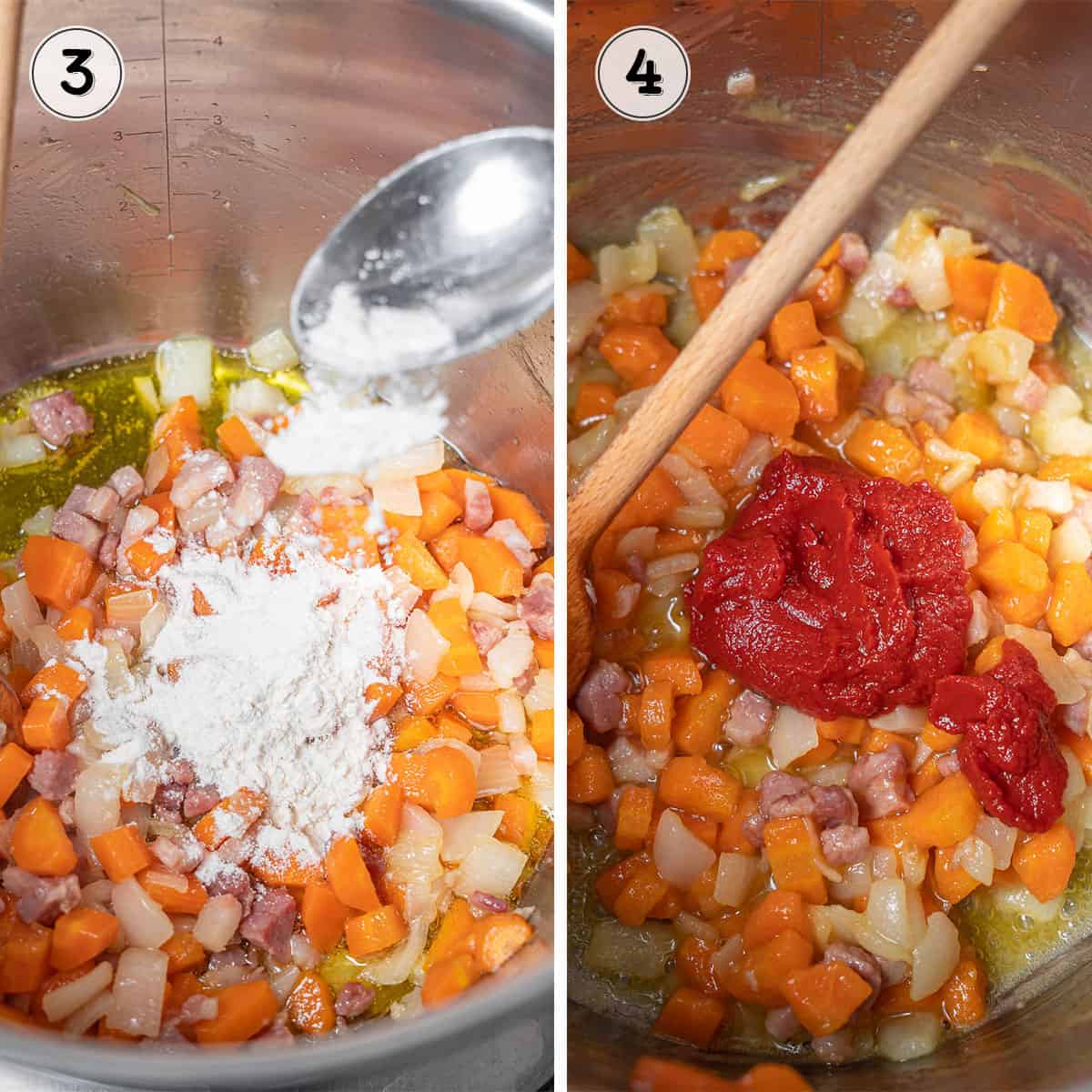
- Sprinkle in the flour, then stir and cook for a couple of minutes. Keep the heat low so the flour doesn’t brown. (image 3)
- Add the tomato paste. (image 4)
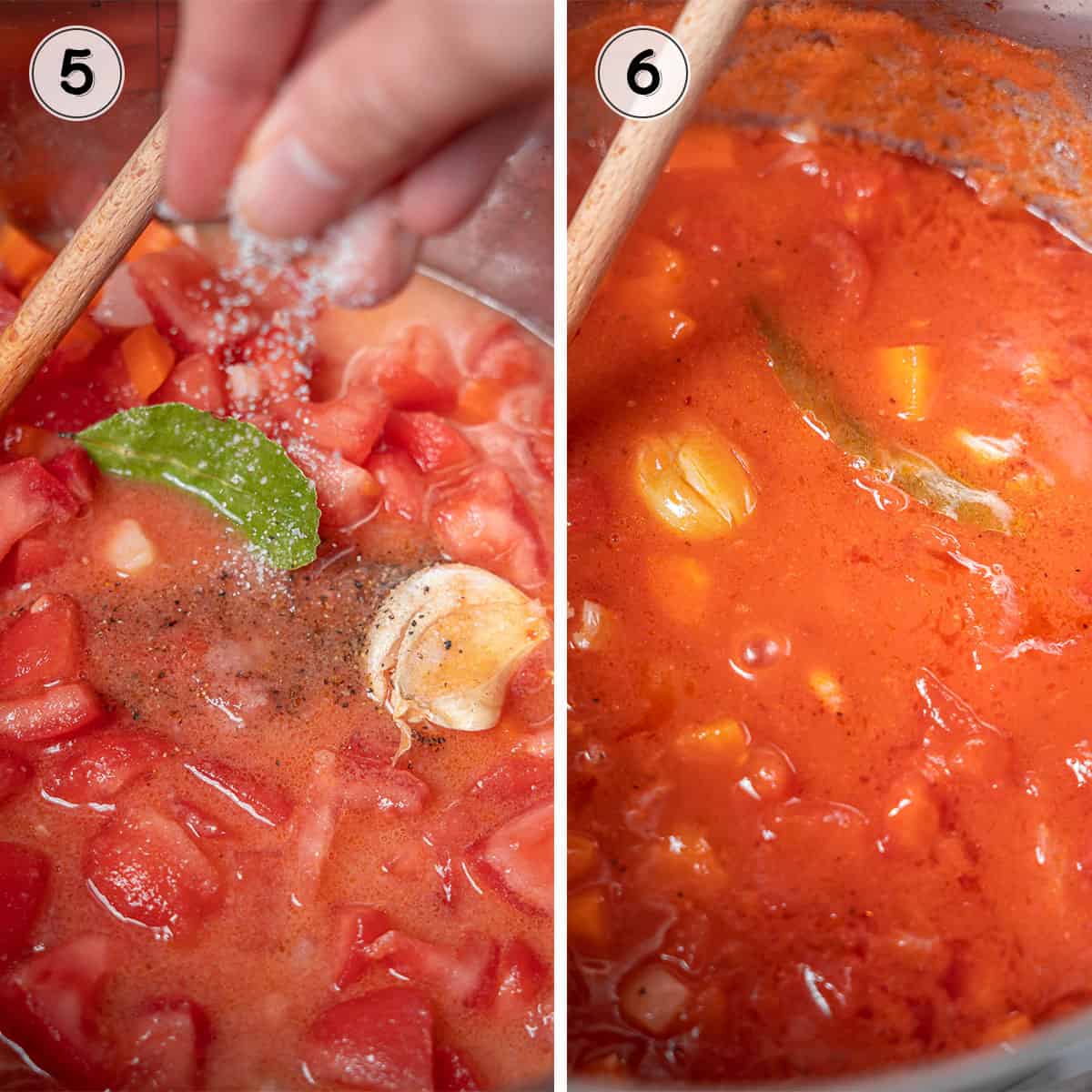
- Pour in the water, fresh tomatoes, garlic, and bay leaves, then season with salt and pepper (and a little sugar if you’re using acidic tomatoes). (image 5)
- Simmer for an hour, skimming off any foam as needed. (image 6)
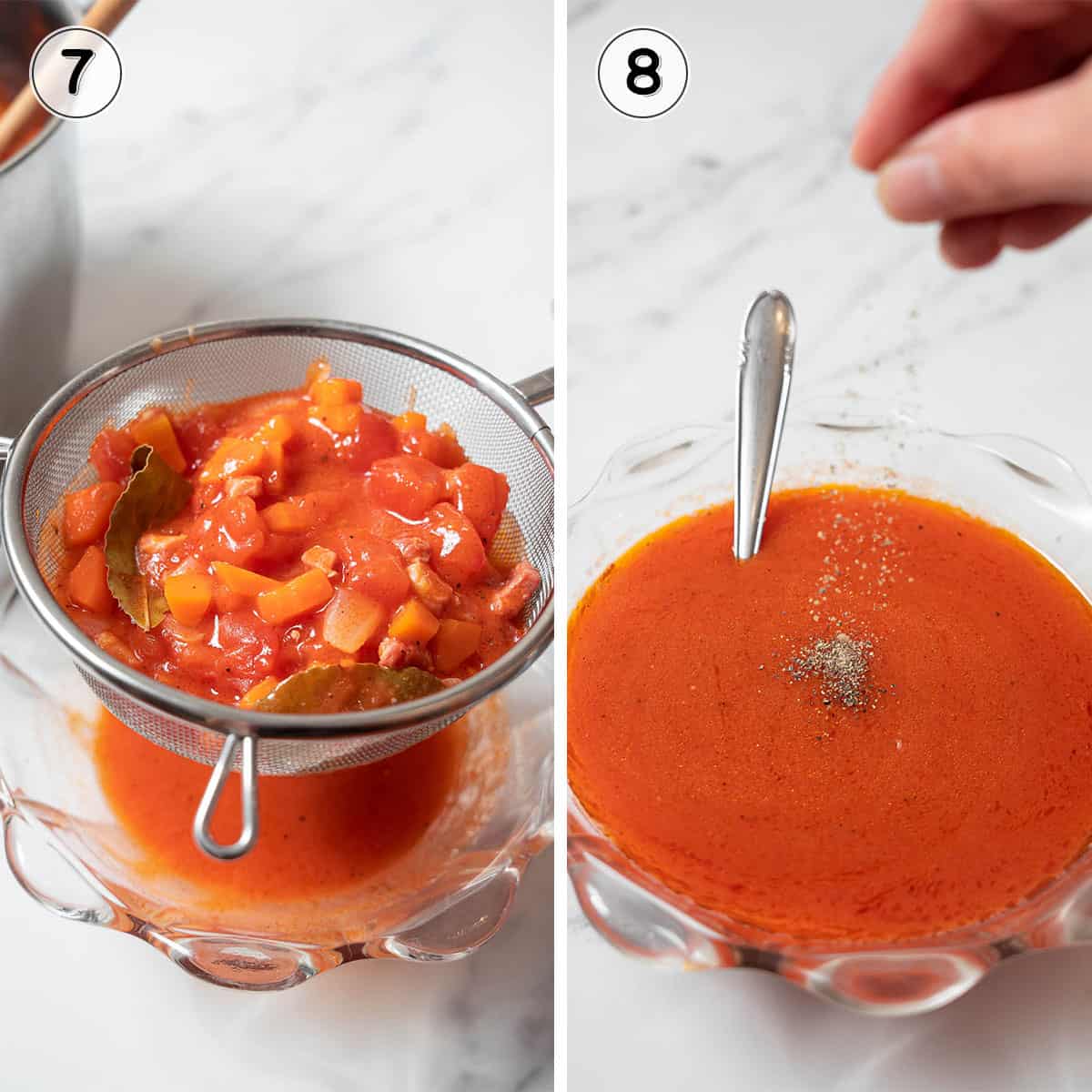
- Strain out the vegetables and bay leaves, letting the juices drain into a large bowl. (image 7)
- Season with salt and pepper, then use in your favorite Spanish recipes. (image 8)
Recipe FAQs
Tomato sauce can be called salsa roja, literally meaning “red sauce,” or it can be called salsa de tomate, which means “tomato sauce.”
Tomate frito is a very simple Spanish sauce made from sautéing tomatoes with onion, garlic, salt, and sugar, then puréeing it. Salsa de tomate is made with a similar method, but includes carrot and a little flour for thickening it. Also, the vegetables are strained out, leaving the sauce behind, not puréed.
Ketchup is often called salsa de tomate in Spain, but the two are very different! This tomato sauce has a thinner consistency and very different flavor than ketchup.
Serve
Use your homemade salsa de tomate as a base for soups or as an ingredient in other Spanish recipes, such as pollo con tomate. You can even enjoy this flavorful sauce on its own!
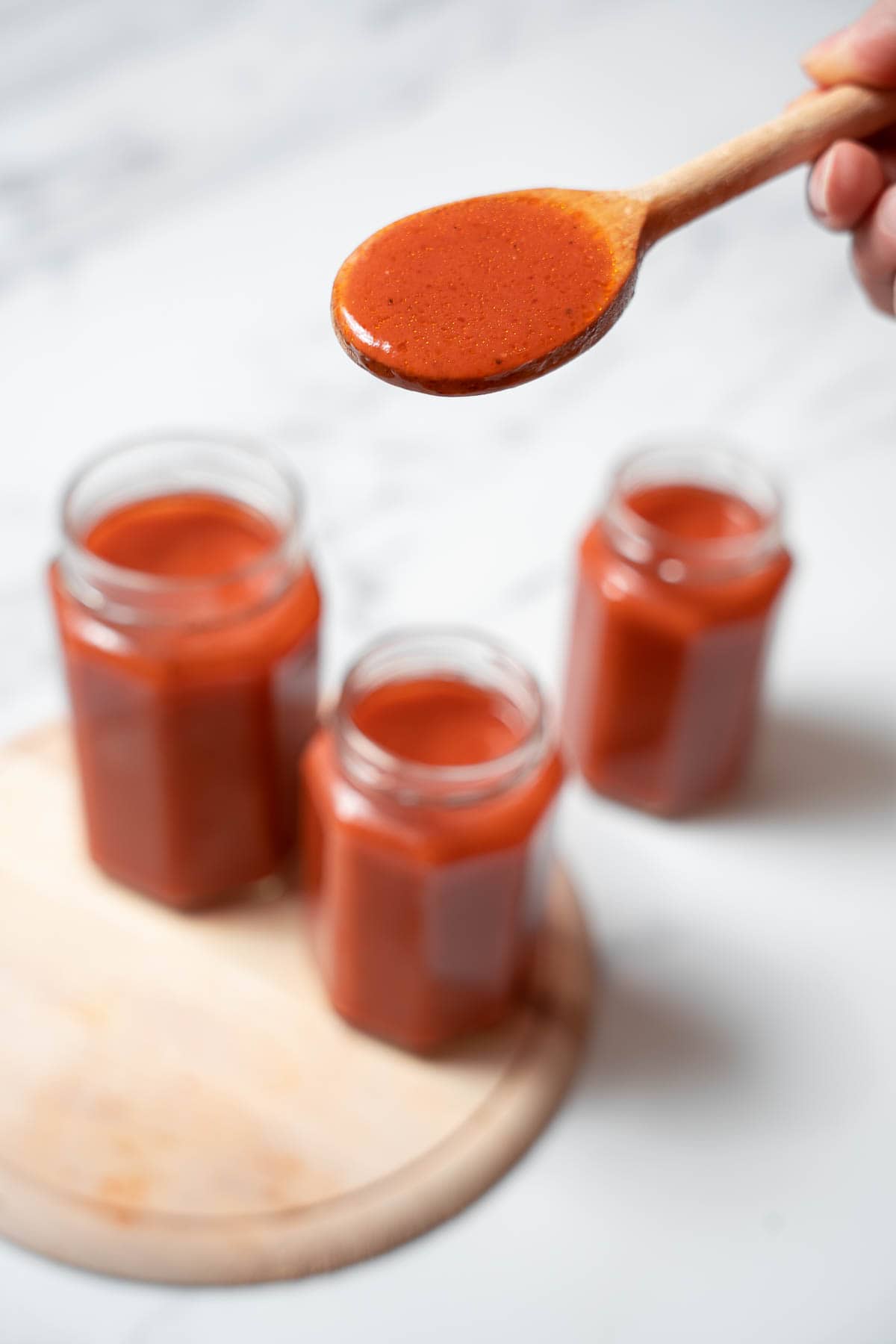
Expert Tips
- Use good quality ingredients, such as ripe tomatoes and Spanish olive oil, for the best flavor.
- Season to taste with salt, pepper, and sugar to add flavor and counteract the acidity of the tomatoes.

Spanish Tomato Sauce Recipe (Salsa de Tomate)
This Spanish tomato sauce recipe is straight from my culinary school in Spain! It’s an easy and delicious recipe that’s made from tomatoes, carrots, garlic, and flour!
Print (images optional)
Pin
Rate
Servings: 4
Calories: 302.54kcal
Instructions
-
Heat the olive oil in a pot and add the pancetta. Cook it slowly over medium-low heat without browning, then add the carrot and onion and sauté until the vegetables are softened but not browned.
-
Sprinkle in the flour and stir and cook for a couple of minutes, not allowing the flour to burn or take on color.
-
Add the tomato paste, the diced tomatoes, water, garlic cloves, and bay leaves, then add salt, pepper, and a bit of sugar if the tomatoes are very acidic. Simmer slowly for about an hour, skimming off any foam as it cooks.
-
Strain out the vegetables with a sieve or colander, then add salt and pepper as desired to the reserved liquid. You should have 2 cups (about 500 ml).
-
Use this salsa de tomate in other Spanish recipes, or enjoy on its own.
Notes
- Use good quality ingredients, such as ripe tomatoes and Spanish olive oil, for the best flavor.
- Season to taste with salt, pepper, and sugar to add flavor and counteract the acidity of the tomatoes.
Nutrition
Calories: 302.54kcal | Carbohydrates: 23.75g | Protein: 7.46g | Fat: 21.19g | Saturated Fat: 4.9g | Polyunsaturated Fat: 3.02g | Monounsaturated Fat: 12.13g | Trans Fat: 0.03g | Cholesterol: 16.5mg | Sodium: 383.87mg | Potassium: 1041.07mg | Fiber: 5.57g | Sugar: 12.27g | Vitamin A: 8482.42IU | Vitamin C: 44.36mg | Calcium: 60.2mg | Iron: 1.87mg
Photography by Giulia Verdinelli
[ad_2]
Source link